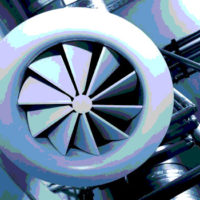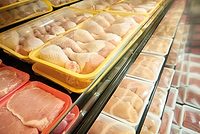Sponsored Content
How the World’s Largest Cheese Producer Manages Quality

Cheese has long been considered a cultural representation, even among the most ancient civilizations; it is delicious and a consumer favorite. The global cheese market is enormous and is currently expanding at an impressive rate.
In 2017, the U.S. cheese industry produced nearly 13 billion pounds of cheese—worth upwards of $40 billion.
The world’s largest cheese producer exemplifies an ethos dedicated to quality, commitment, customer care, and intellectual business pursuits. The company created an innovative, quality quick-frozen freshness lock—a game changer—that eventually thrust them ahead of their competition where they remain today. Not surprisingly, this one company holds more than 50 patents in dairy production.
Through hard work, dedication, and a customer-centric commitment, the company routinely exceeds the expectations of its customers. As an industry leader, it is understood that in order to produce quality, safe food products, the process must begin with the best ingredients and, of course, a commitment to implementing strict food safety protocols and preparedness plans.
The Situation
?This company has always relied on PureLine to manage their preventive and remedial pathogen disinfection projects. These include emergency sterilization projects as well as the more proactive scheduled sterilization projects—like those endeavors carried out after a processing plant has been recently renovated or reconstructed.
The sterilization process is incredibly important; for every hour a production line remains inactive, this company (or any processing plant) takes a financial hit. As such, the two primary goals of sterilizing a dairy equipment processing plant are:
- to sterilize and to get it done right, and
- to get it done fast.
Approach to Food Safety.jpg)
Dairy processing plants, like all food processing plants, are routinely cleaned. It is a scheduled component of the process and required by law. In fact, the latest dairy processing equipment has been specifically designed to facilitate the dairy equipment’s daily regimen. Of course, like any food plant, there are sanitation emergencies, but for the most part, routine cleaning and scheduled maintenance are a company’s primary ways of maintaining safe food products.
However, when the desire to expand or redesign a processing plant arises—or when replacement of equipment in a processing plant is needed—it is known before production restarts that the entire area must be sanitized professionally.
Just recently, this large dairy processing plant faced a need for an "after construction" proactive sterilization. In late 2018, they upgraded the dairy processing equipment in one of their dairy processing plants. After 15 years in use, the dairy processing equipment in this plant was scheduled to be upgraded.
The Equipment Upgrade
Near the end of 2018, the plant was finalizing the update of one of the three production lines at their largest facility.
The equipment had run the course of its useful life, but, more importantly, the new equipment being installed was being built with radical updates to facilitate the equipment’s daily cleaning processes. In other words, the updated equipment had all the bells and whistles of modern equipment with the added benefit of clever, effective built-ins that improved and sped up the equipment’s daily cleaning routine.
Let’s take a look at how the company managed the critical sterilization stage after the production equipment update was complete. Who did they trust to get this post-construction sterilization done right, on-time, and in a flash?
As their trusted partner, PureLine was chosen to sterilize the upgraded/reconstructed portion of this facility. The company's experience with PureLine Solutions throughout the system upgrade made the decision almost routine.
Decision and Results
The plant’s engineering management has overseen numerous proactive sterilization projects. The team understood what it took to skillfully plan and execute the sterilization of 3 million cubic feet efficiently and professionally. That is why they relied on PureLine services.
Over time, they learned that Pureline Solutions’ chlorine dioxide sterilization processes were performed professionally by a team of experts who coordinated and preplaned the project with great precision, flexibility, and communication. When they previously required PureLine’s professional assistance, PureLine successfully met the project’s determined goals and time commitments.
The sterilization of just one of their three production lines required PureLine professionals to lay 2.5 miles of fumigation line to ensure the chlorine dioxide treatment reached every square inch of that 3 million cubic feet of space requiring sterilization.
The fumigation lines were connected to two Pureline MobileClean trucks—each situated on opposing sides of the plant. For the next 8 hours, Pureline’s trucks generated enough chlorine dioxide to sterilize nearly 3 million cubic feet of space, delivering a validated 6-log kill throughout the treatment area.
Why Sterilize with Chlorine Dioxide?
?Foodborne illness is one of the many fundamental causes of human illness. Microorganisms impact human health across a spectrum of maladies that include allergies and sensitivities on one end to serious illnesses—like food infections or food intoxications—on the other end.
Ensuring food safety equipment and plants are clean is only the first step to producing safe food products. While disinfection is an effective method of bacterial cleaning, it does not reach the level of sterilization that is provided by a chlorine dioxide treatment.
Sterilization is designed to kill 99.9999 percent of microorganisms to achieve what is referred to as a 6-log kill—a statistical measurement (known as a sterility assurance level) that is used as an acceptable definition of "Zero Viable Organisms."
Despite the incredible challenges that this plant and other dairy manufacturers face each day, it is noted that the U.S. dairy food supply is one of the safest in the world!
The Results
Pureline’s chlorine dioxide sterilization treatment is a comprehensive process. The key to excelling at the process relies upon Pureline’s dedicated teams—teams that remain in constant contact with a customer long before the sterilization project even begins. These phases generally follow this order:
Planning: The planning phase can last several weeks and generally depends on the customer’s time requirements and the project’s complexity.
Preinspection: PureLine onsite members perform a final walk-through to double-check that the building is ready for the chlorine treatment to begin.
Execution: When PureLine’s equipment has been readied and the preinspection has been completed, a safety meeting led by PureLine is held with members of the customer team. The chlorine dioxide treatment begins under the watchful eye of Pureline professionals. The amount of time required to complete a chlorine dioxide treatment varies based on the size of the area and the reason/purpose of the sterilization treatment. These are most often completed within a single day.
When the chlorine dioxide treatment is done, the degassing phase begins. For the next few hours, the facility’s exhaust fans reduce the interior gas concentrations until they reach acceptable levels suitable for human habitation.
The chemical application that sterilized 3 million cubic feet required an 8-hour application. Technically, when considering the setup and degassing phases, PureLine’s team of professionals masterfully organized, coordinated, and executed a sterilization project that allowed the customer’s production line (housed in the largest cheese plant in the world) to start production immediately.
Because PureLine’s chlorine dioxide sterilization process was so well planned and completed so quickly and on-time, a 6-log reduction in microbial contaminants was achieved and downtime was kept at a minimum as production was resumed on schedule.
Pureline Solutions offers a unique chlorine dioxide floor wash service, which is often combined with a chlorine dioxide gas treatment to initially disinfect floors and drains, and can be subsequently used as a complete sterilization process. Learn more at PureLine.info.
Looking for a reprint of this article?
From high-res PDFs to custom plaques, order your copy today!





